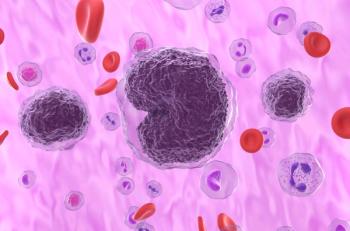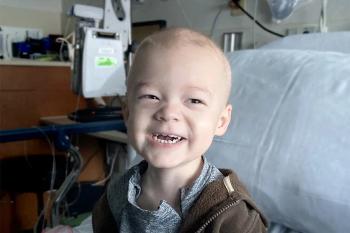
- July 2025
- Volume 31
- Issue Spec. No. 8
- Pages: SP516-SP517
Structured Exercise Program Improves Outcomes, Quality of Life in Colon Cancer
Key Takeaways
- A 3-year structured exercise program post-chemotherapy improved disease-free and overall survival in stage III or high-risk stage II colon cancer patients.
- Patients in the exercise program reported better physical function and fitness compared to those receiving only health education and standard surveillance.
Structured exercise programs should be a part of the standard of care for colon cancer following adjuvant chemotherapy, authors of the CHALLENGE study recommended.
Patients with stage III or high-risk stage II
Preclinical and observational research has shown potential in exercise following diagnosis to improve cancer outcomes, and The Canadian Cancer Trials Group (CCTG) launched the randomized, phase 3 CO.21 Colon Health and Lifelong Exercise Change (CHALLENGE) trial (NCT00819208) to address the gap in randomized, controlled research.
“The CHALLENGE study is the first randomized controlled trial in the world to specifically ask whether exercise can improve cancer survival,” lead study author Christopher Booth, MD, FRCPC, director of the Division of Cancer Care and Epidemiology at the Queen’s University Cancer Research Institute in Ontario, Canada, noted in his presentation at ASCO.
The trial enrolled 889 patients with resected colon cancer who had completed adjuvant therapy across 55 sites in 6 countries between 2009 and 2024. Patients were randomized to either participate in a structured exercise program (SEP; n = 445) or receive health education materials alone (HEM; n = 444) over a 3-year period.2
Whereas HEM participants received written guidance promoting physical activity and nutrition, those in the SEP group engaged in a personalized, behaviorally supported exercise intervention over 3 years. The SEP aimed to increase recreational physical activity by at least 10 metabolic equivalent hours per week within the first 6 months. Patients themselves selected their preferred type, frequency, and intensity of aerobic activity, with programs designed to help them ramp up and maintain their physical activity levels.
“The physical activity consultant worked with patients to create an exercise prescription based on the activities and the lifestyle of that individual,” Booth explained. “This could include any number of aerobic forms of exercise, from swimming, to biking, to kayaking, to cross-country skiing, or running. Most patients, however, undertook a walking program and could meet their targets by adding 45 to 60 minutes of a brisk walk 3 to 4 times per week.”
The primary end point was DFS, with secondary end points including OS and patient-reported physical function, measured by the 36-Item Short Form (SF-36) survey, and objective fitness measures.
At a median follow-up of 7.9 years, SEP participants experienced a significant reduction in disease recurrence or death. Five-year DFS was 80.3% in the SEP group vs 73.9% in the HEM group (HR, 0.72; 95% CI, 0.55-0.94; P = .017). Eight-year OS was 90.3% for SEP vs 83.2% for HEM (HR, 0.63; 95% CI, 0.43-0.94; P = .022).
Participants in the SEP group reported greater improvements in SF-36 physical function subscale vs the HEM group at 6 months, 1 year, 18 months, 2 years, and 3 years. Objective measures of fitness, including predicted maximum volume of oxygen consumption and 6-minute walk test distance, were also improved in the SEP group.
In an as-treated safety analysis of 428 patients in the SEP group who had completed at least 1 exercise session and 444 patients in the HEM group, an adverse event (AE) of any grade occurred in 82% of patients in the SEP group and 76.4% in the HEM group. Musculoskeletal AEs were reported in 19% of participants in the SEP group compared with 12% in the HEM group, with 10% of musculoskeletal AEs in the SEP group attributed to the intervention.
“The structured exercise program following adjuvant chemotherapy for colon cancer improved fitness, disease-free survival, and overall survival,” Booth concluded, noting that data in the breast cancer space suggest these results may be generalizable to the broader cancer space. “These results demonstrate a novel, first-in-class, anticancer effect of a new form of cancer therapy. Moreover, the magnitude of improvement in disease-free survival and overall survival is comparable to many standard medical therapies.”
"The CHALLENGE trial sets a new standard of care for the management of high-risk stage II and stage III colon cancer," Booth said. "Exercise is no longer just an intervention that improves quality of life and fitness. It is a treatment that improves survival for colon cancer and should be made available to all patients."
Telling patients to exercise alone is not sufficient, Booth added. Health systems, providers, hospitals, and payers must invest in behavior support programs to allow oncologists to refer patients to exercise specialists following adjuvant chemotherapy.
"This intervention is empowering for patients, it is achievable for patients, and with a cost that is far lower than our standard medical therapies, it is sustainable for health systems," Booth said.
References
1. Booth CM, Vardy JL, O’Callaghan CJ, et al. A randomized phase III trial of the impact of a structured exercise program on disease-free survival (DFS) in stage 3 or high-risk stage 2 colon cancer: Canadian Cancer Trials Group (CCTG) CO.21 (CHALLENGE). J Clin Oncol. 2025;43(suppl 17). doi:10.1200/JCO.2025.43.16_suppl.LBA3510.
2. Courneya KS, Vardy JL, O'Callaghan CJ, et al. Structured exercise after adjuvant chemotherapy for colon cancer. N Engl J Med. Published online June 1, 2025. doi:10.1056/NEJMoa2502760
Articles in this issue
Newsletter
Stay ahead of policy, cost, and value—subscribe to AJMC for expert insights at the intersection of clinical care and health economics.













































